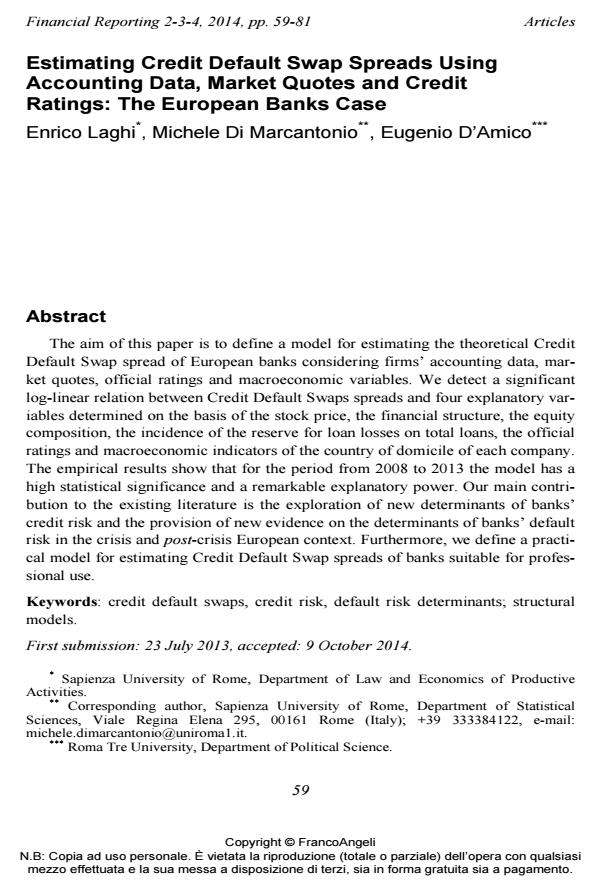Estimating credit default swap spreads using accounting data, market quotes and credit ratings: the European Banks Case
Titolo Rivista FINANCIAL REPORTING
Autori/Curatori Enrico Laghi, Michele Di Marcantonio, Eugenio D'Amico
Anno di pubblicazione 2015 Fascicolo 2014/2-3-4
Lingua Inglese Numero pagine 23 P. 59-81 Dimensione file 309 KB
DOI 10.3280/FR2014-002003
Il DOI è il codice a barre della proprietà intellettuale: per saperne di più
clicca qui
Qui sotto puoi vedere in anteprima la prima pagina di questo articolo.
Se questo articolo ti interessa, lo puoi acquistare (e scaricare in formato pdf) seguendo le facili indicazioni per acquistare il download credit. Acquista Download Credits per scaricare questo Articolo in formato PDF

FrancoAngeli è membro della Publishers International Linking Association, Inc (PILA)associazione indipendente e non profit per facilitare (attraverso i servizi tecnologici implementati da CrossRef.org) l’accesso degli studiosi ai contenuti digitali nelle pubblicazioni professionali e scientifiche
The aim of this paper is to define a model for estimating the theoretical Credit Default Swap spread of European banks considering firms’ accounting data, market quotes, official ratings and macroeconomic variables. We detect a significant log-linear relation between Credit Default Swaps spreads and four explanatory variables determined on the basis of the stock price, the financial structure, the equity composition, the incidence of the reserve for loan losses on total loans, the official ratings and macroeconomic indicators of the country of domicile of each company. The empirical results show that for the period from 2008 to 2013 the model has a high statistical significance and a remarkable explanatory power. Our main contribution to the existing literature is the exploration of new determinants of banks’ credit risk and the provision of new evidence on the determinants of banks’ default risk in the crisis and post-crisis European context. Furthermore, we define a practical model for estimating Credit Default Swap spreads of banks suitable for professional use.
Parole chiave:Credit default swaps, credit risk, default risk determinants; structural models
- Income Smoothing via Loan Loss Provision in Credit Cooperative Banks Stefano Azzali, Luca Fornaciari, Tatiana Mazza, in FINANCIAL REPORTING 2/2017 pp.33
DOI: 10.3280/FR2016-002002
Enrico Laghi, Michele Di Marcantonio, Eugenio D'Amico, Estimating credit default swap spreads using accounting data, market quotes and credit ratings: the European Banks Case in "FINANCIAL REPORTING" 2-3-4/2014, pp 59-81, DOI: 10.3280/FR2014-002003